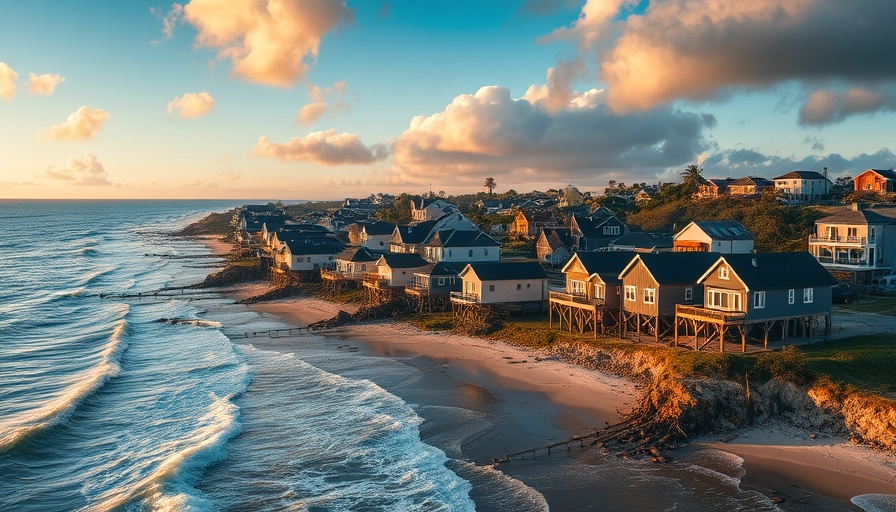
Understanding the Impacts of Sea Level Rise and Migration
As our world grapples with rising temperatures and accelerating sea levels, the reality of climate change manifests in increasingly alarming ways. A recent study published in Communications Earth and Environment warns that even if global warming is limited to 1.5°C—an ambitious target of the Paris Agreement—significant challenges await us. Notably, this warming could still precipitate dramatic inland migrations due to catastrophic sea level rise.
Historical Context and Background of Climate Trends
Throughout Earth's history, warm periods have generated substantial changes in climate and habitat. The current trajectory indicates that we are on the brink of such changes, with ice sheet masses thawing more rapidly than previously anticipated. This study draws on historical data, demonstrating how even slight increases in temperature can lead to widespread ice sheet collapse, significantly raising sea levels. The implications could be dire for coastal communities, prompting a wave of climate migration.
Why This Study Matters for Hospitality Professionals
For boutique hospitality professionals—such as hotel owners and eco-lodge managers—understanding these trends is crucial. As people flee inundated coastal areas, inland regions will inevitably see an influx of new residents seeking stability. This shift not only affects community infrastructures but also the tourism and hospitality sectors. Hoteliers must prepare for new market dynamics that could alter their visitor demographics.
Potential Economic Impact on Coastal Regions
As sea levels rise and communities adapt, the economic implications for businesses near coastlines could be severe. Properties may become uninsurable, and the resulting loss of property values can affect local tax revenues and infrastructure funding. For hospitality professionals, this presents both a challenge and an opportunity; adapting business models to stay viable amidst transformation is paramount.
Connection to Climate Awareness and Sustainable Practices
This study reminds us that climate awareness extends beyond understanding direct impacts; it requires actionable insights and sustainable practices. Incorporating eco-conscious strategies—like chaos gardening or utilizing leather alternatives—can help establishments not only survive but thrive. By fostering resilience through sustainable tourism, boutique properties can navigate the challenges posed by climate change while appealing to a growing demographic that prioritizes eco-friendly practices.
Future Predictions and Opportunities for Innovation
As we anticipate more severe weather patterns and greater inland migration, innovative solutions will be key. Hospitality venues might diversify their offerings to include educational workshops about nature reserves or initiatives focused on biodiversity, such as recognizing the importance of bees and their role in pollination. By embracing sustainability, the hospitality industry can lead the charge in developing eco-centric community practices.
Counterarguments: Limitations of Current Climate Agreements
Critics of the Paris Agreement contend that even its stringent targets may prove insufficient. If these projections hold true and multiple ice sheets collapse, the resulting rise in sea levels could dwarf current estimations. This uncertainty highlights the crucial need for continuous climate dialogue and the importance of exceeding the baseline expectations set by international agreements.
Conclusion: The Need for Action and Community Engagement
The impending challenge of population displacement due to climate-related sea level rise underscores the urgency for action. As boutique hospitality professionals, innovative strategies and proactive community engagement will be vital. Adaptation is not only necessary but can form the backbone of a resilient future. By integrating sustainable practices, the hospitality sector can play a pivotal role in fostering climate resilience, ultimately benefiting both the environment and local economies.
Now is the time for hospitality professionals to take action and prepare for these changes. Your efforts can contribute to a more sustainable future, helping both your business and the community adapt to the realities of our changing planet.
 Add Row
Add Row  Add
Add 




Write A Comment